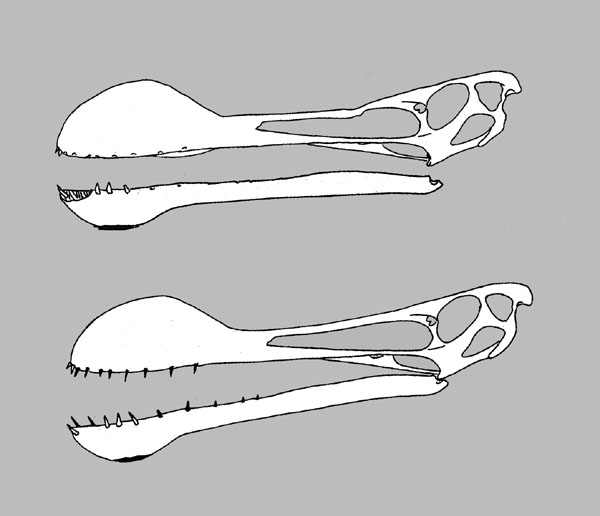
Genus: Tropeognathus WELLNHOFER, 1987 (partim)
Etymology: Greek, tropis, "keel," and Greek, gnathos, "jaw"; named for the keeled
jaws.
Species: mesembrinus (WELLNHOFER, 1987)
UNWIN, 2003
Etymology: Greek, mesembrinos, "southern"; in reference to its occurrence in
the southern hemisphere.
= Tropeognathus mesembrinus WELLNHOFER,
1987
= Anhanguera mesembrinus (WELLNHOFER, 1987)
KELLNER & CAMPOS, 1989
= Criorhynchus mesembrinus (WELLNHOFER,
1987) FASTNACHT, 2001
= Coloborhynchus mesembrinus (WELLNHOFER,
1987) VELDMEIJER, 1998
Holotype: BSP 1987 I 46
Locality: Probably from Ceara, Chapade do Araripe, Ceara State, Northeastern Brazil.
Horizon: Romualdo Member, Santana Formation, Araripe Group.
Biostratigraphy:
Age: Late Aptian or Early Albian Stage, Middle Gallic Subepoch, Upper Early Cretaceous Epoch, Early Cretaceous.
Material: Skull and dentary.

Referred material:
= cf. Criorhynchus mesembrinus VELDMEIJER, 2002
SMNS 56994: Mandible.
HOLGADO, SARAIVA & BANTIM, 2023
MSPC 867R: Very fragmentary skull and mandible.
= Tropeognathus cf. T. mesembrinus KELLNER, CAMPOS, SAYAO, SARAIVA, RODRIGUES, OLIVEIRA, CRUZ, COSTA, SILVA & FERREIRA, 2013
Locality: Exact locality unknown, it probably came from the outcrops around Santana do Cariri, Ceara State, Araripe Basin, Northeastern Brazil.
Horizon: Romualdo Member, Santana Formation, Araripe Group.
Biostratigraphy:
Age: Late Aptian or Early Albian Stage, Middle Gallic Subepoch, Upper Early Cretaceous Epoch, Early Cretaceous.
Material:
MN 6594-1: Incomplete skull (including braincase) and lower jaw, five cervical vertebrae (including part of the axis), twelve dorsal vertebrae (five fused into a notarium), sacrum, incomlpete scapula and coracoid from both sides, sternum, pelvic region and wing elemetns from both sides.